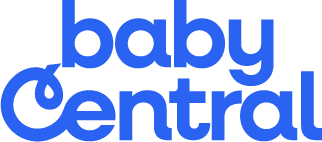Bringing a baby into the world is exciting - but it also means being prepared for anything, from a surprise fever to an unexpected scrape. As a paediatric nurse, I’ve seen firsthand how helpful it is when parents have a well-stocked baby first aid kit on hand.
Whether you're at home or heading out on a family holiday, a thoughtfully packed first aid kit can give you peace of mind and help you respond quickly and calmly to minor illnesses or accidents.
Here’s my professional guide to what every parent should include in their baby’s first aid kitand why.
Digital Thermometer
A reliable digital thermometer is a must-have. Fevers are one of the most common symptoms in babies and accurate temperature readings are key to knowing when to seek medical advice.
Tip: Ear thermometers aren’t always accurate for infants under 6 months - opt for a digital rectal or forehead thermometer for newborns
Infant Paracetamol & Ibuprofen
Always keep age-appropriate infant pain relievers on hand (like paracetamol or ibuprofen), especially for fevers, teething or post-vaccination discomfort.
Important: Check dosing instructions by weight and age, and consult your doctor before first use.
Nasal Aspirator & Saline Drops
Babies can’t blow their noses, so when they’re congested, a nasal aspirator (bulb or suction type) and saline nasal drops can help clear their airways and make breathing and feeding easier.
Nappy Rash Cream
A soothing nappy rash barrier cream (like zinc oxide or a natural alternative) helps prevent and treat irritation. Choose a trusted brand that’s gentle enough for newborns.
Teething Relief
From teething gels to silicone teething toys, include safe options to help relieve sore gums. Cold teethers from the fridge can work wonders for soothing inflammation.
Electrolyte Solution
If your baby is unwell with vomiting or diarrhoea, a baby-safe oral rehydration solution can help replace lost fluids and prevent dehydration. Always consult a doctor for babies under 6 months.
Antiseptic Wipes & Cream
For minor cuts, scrapes, or insect bites, you’ll need baby-safe antiseptic wipes and a healing cream to clean and protect delicate skin.
Bandages, Gauze & Adhesive Plasters
Stock your kit with a variety of plasters (band-aids), sterile gauze, and soft bandages. Choose hypoallergenic options for sensitive skin.
Tweezers & Safety Scissors
For splinters or removing ticks, fine-tipped tweezers are useful. And for trimming dressings or opening packaging, blunt-tip safety scissors are a must.
Gloves & Hand Sanitiser
Always include disposable gloves and hand sanitiser so you can clean your hands before and after treating your little one, especially when you're out and about.
Baby Health Record & Emergency Contacts
Keep a copy of your baby’s health record, any known allergies, and a list of emergency phone numbers - including your paediatrician’s - in your kit or on your phone for easy access.
Bonus: Travel Mini Kit
For outings or travel, create a compact version of your home kit with a few essentials - like plasters, thermometer strips, saline, and paracetamol sachets - in a zip-up pouch that fits in your nappy bag.
You can’t plan for every bump, bruise, or sniffle - but having a well-stocked baby first aid kit puts you one step ahead. It’s not just about products it’s about peace of mind. Check your kit every few months, replace expired items and tailor it to suit your baby’s age and needs.
Being prepared doesn’t mean being worried - it means being confident and ready to care for your baby, no matter what.
Stay calm, stay stocked and remember - you’ve got this!


























What to Pack in Your Baby’s First Aid Kit: A Paediatric Nurse’s Guide